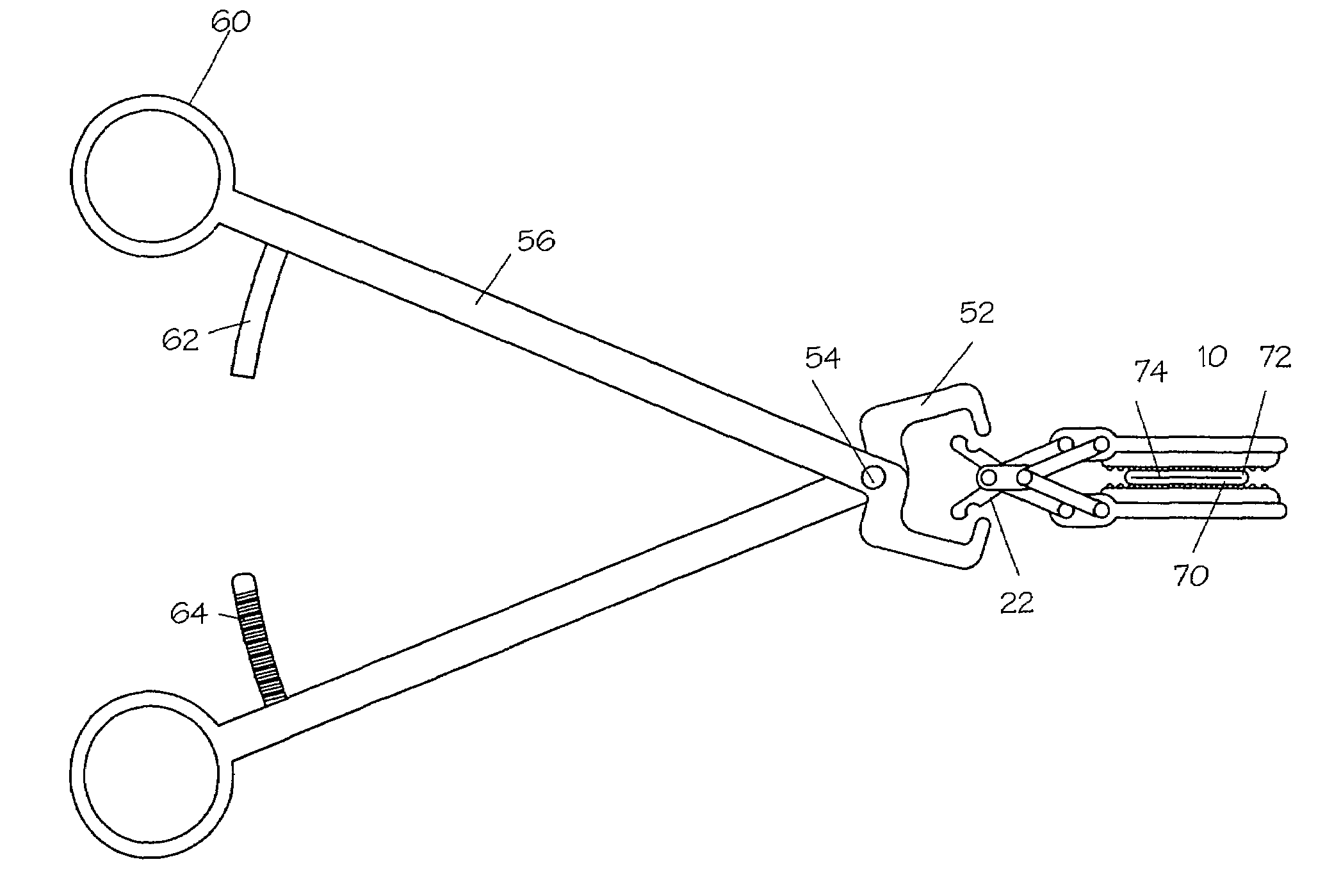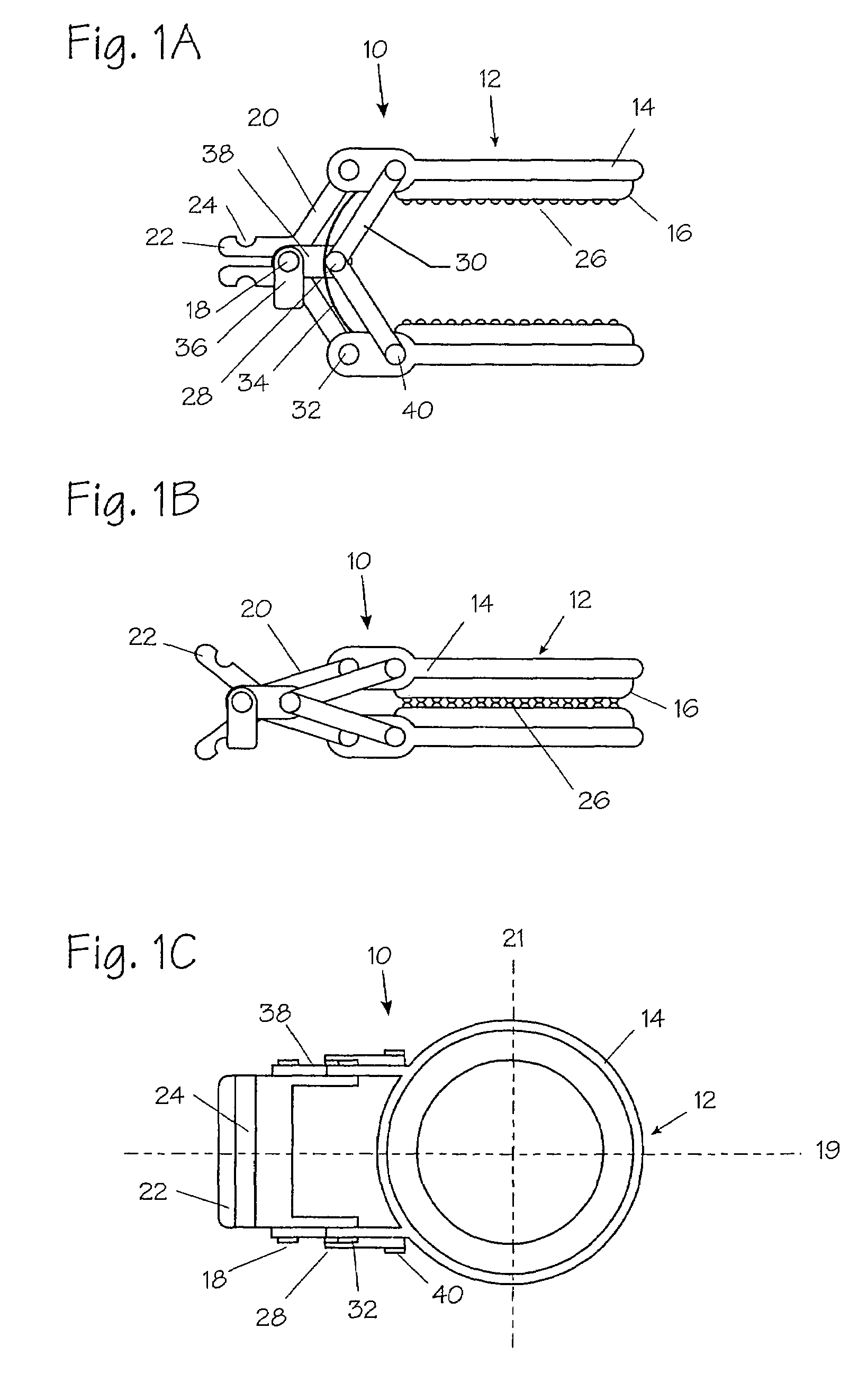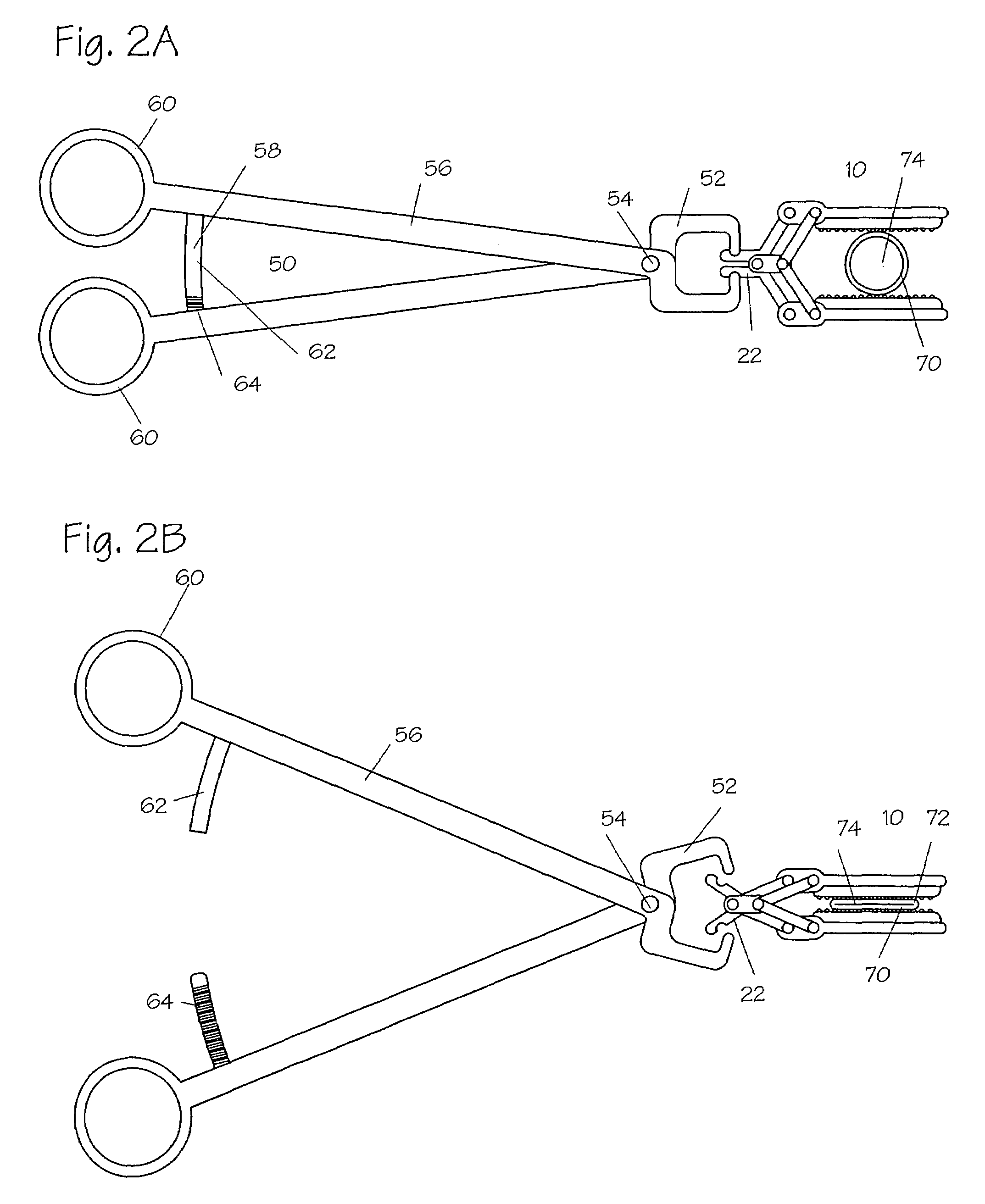Method and apparatus for vascular and visceral clipping
a technology of vascular and visceral wounds, applied in the field of trauma surgery, combat medicine, emergency medical services, etc., can solve the problems of increasing the chance of accelerated deterioration of the patient's condition, the optimized solution of sutures and current clips, and the inability to open visceral and vascular wound repair. , to achieve the effect of reducing the chance of tissue ingrowth, improving ease of removal, and low profil
- Summary
- Abstract
- Description
- Claims
- Application Information
AI Technical Summary
Benefits of technology
Problems solved by technology
Method used
Image
Examples
Embodiment Construction
[0052]FIG. 1A illustrates a side view of a clip 10 of the present invention. The clip 10 comprises a plurality of jaws 12, further comprising a frame 14 and a pad 16, a main hinge 18, a plurality of main struts 20, a plurality of opening tabs 22, a plurality of grasping detents 24, and a plurality of optional serrations 26 on one or more of the pads 16. The clip 10 further comprises an optional secondary hinge 28, a plurality of optional secondary struts 30, a plurality of main pivot points 32, an optional spring 34, an optional lock 36, an optional hinge bracket 38, and a plurality of optional secondary pivot points 40.
[0053]Referring to FIG. 1A, the jaws 12 of the clip 10 are shown in their open configuration. The frame 14 provides rigid support and orientation for the pads.16. The top and bottom frames 14 are connected to a main hinge 18 through a plurality of main struts 20. Each of the main struts 20 is rigidly affixed to the opening tab 22 with the grasping detent 24 formed in...
PUM
 Login to View More
Login to View More Abstract
Description
Claims
Application Information
 Login to View More
Login to View More - R&D
- Intellectual Property
- Life Sciences
- Materials
- Tech Scout
- Unparalleled Data Quality
- Higher Quality Content
- 60% Fewer Hallucinations
Browse by: Latest US Patents, China's latest patents, Technical Efficacy Thesaurus, Application Domain, Technology Topic, Popular Technical Reports.
© 2025 PatSnap. All rights reserved.Legal|Privacy policy|Modern Slavery Act Transparency Statement|Sitemap|About US| Contact US: help@patsnap.com



